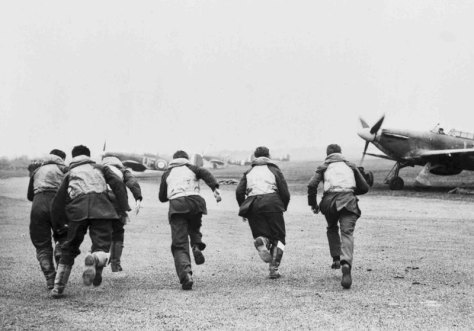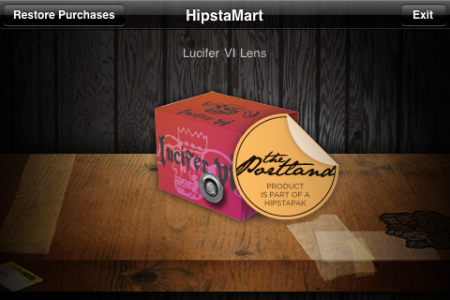
So are you thinking about running a pilot or a trial?
How many pilots do we need? Or is it more a question that we need to run a pilot at our institution before we think about “rolling” it out across all curriculum areas. I am also aware of successful pilots in one curriculum area which have been followed by virtually identical pilots in a second curriculum area… Why? Well the learners are different! Really! How different, they have two heads or something? That actually raises a question on any pilot, well successful pilots have resulted in a roll out across the whole institution?
We do see institutions that use tools such as Powerpoint across the institution, similarly we see some institutions have embedded the use of the VLE. However was this via projects and pilots? Or was it something different?
Do pilots actually help institutions move forward in using learning technologies or are they causing problems rather than solutions?
Do you read about pilots and projects from other organisations? Do you follow their advice when implementing new technologies or do you decide to run your own pilot? If we don’t learn from pilots that others do, is there any point in doing or talking about pilots?
I also had a recent conversation where the institution was going to do a pilot as it couldn’t afford a mainstream rollout of the technology. Now this I really didn’t understand, you already know from the research undertaken that the technology works and has a positive impact, however rather than buy enough for the institution you’re only going to buy enough to repeat the pilot already done. Why couldn’t they buy enough? Well they weren’t given the funding.
So….
Maybe the question is, why aren’t the people who are making the financial decisions reading the research and project outcomes?
Hmmm….
Personally my view is that if there is only enough money for a pilot, it’s probably not worth doing and you would be better off spending the money on reinforcing and enhancing the use of a technology you already have. However many might see that as boring.
I thought I would mention some of things I have done at my institution in relation to the introduction of new technologies and the impact they have had.
e-Books
When the JISC Collections e-Books for FE announcement was made, I immediately signed the college up. I recall talking to a colleague who said “so which group of students should we pilot this with”. I thought for a minute and wondered why we needed to do a pilot or a trial. Hadn’t JISC Collections already done that, seen the need to provide the collection and given us an opportunity. So I replied, “no we’re not going to do a pilot, we’re going to launch it for all learners and tell everyone about it, the pilot projects have already been done by JISC, e-books do work, they support, enhance and enrich learning, why on earth would we want to repeat that work, to get the same results, oh and get no funding to do it?” As a result of the mainstream launch of the e-books into the college, we now have learners and practitioners using e-books to support their learning. No need to do a pilot, we knew it worked elsewhere, so why wouldn’t it work at our college?
Video Cameras

I could go on about Flip’ping Pilots, but when an opportunity came to purchase some SD card based video cameras, rather than buy a set of 15 and see how they worked out with groups, we purchased over 300 cameras. The result was just what I expected. More practitioners creating and using video in their teaching. Learners using video for assessment and reflection. Availability of the cameras was the real issue, having lots of them meant that whenever someone wanted to use one, either they had one in their pocket or could get hold a class set really easily. Was I concerned about spending that amount of money on cameras that wouldn’t be used? Well probably slightly, however pilots and projects done elsewhere had demonstrated again and again that video had had a really positive impact on teaching and learning, so why wouldn’t it work at our college?
Clickers
I remember seeing a demonstration of Activexpression by Promethean at my college and been very impressed, the main reason I liked the system over other “clicker” systems including the Promethean Activote was that you could use the system without needing to spend ages preparing the questions in advance.

However another thing I knew, from reading about projects that had implemented clickers in other institutions was that staff didn’t use their sets of clickers very much because they weren’t sure if they would be available, but when they did use them they really thought they worked effectively. The lesson was simple, ensure you have enough clickers available. We also had a need to make assessment more engaging and “fun”, clickers or voting units seemed like an ideal solution based on the work done elsewhere. So once more when some funding was available, we purchased 1500 Activexpression handsets, nearly enough for a hundred classes! They were made available in a range of departments. The result? Well most of the sets were used and used on a regular basis to the point where they are embedded into practice. However I should say not all departments engaged with the technology and some were left in cupboards. However after a period of implementation and relection we relocated the sets not been used. The result was across many curriculum areas the clickers were been actively used to enhance and enrich learning. I had seen the results of many pilots and projects that had used clickers and voting units, so why wouldn’t it work at our college?
iPads
When the iPad first came out, I didn’t think it was going to be the radical device for me that it has eventually come to be. In the end I was really impressed with the device and how it improved my efficiency and workflows for my job. As a result I bought every member of the management team in my centre an iPad. As well as the Libraries and e-Learning, my centre includes Construction, Engineering and Schools Liaison. I certainly didn’t see this as a pilot or a project, much more about them benefiting from the lessons I had learnt. I have had quite a few people in the college come and ask me to provide them with iPads (like I have the budget for that) or have asked to “pilot” them with a group of their learners. As far as I am concerned there have been lots of iPad pilots and projects elsewhere in the world and my college doesn’t need to repeat those experiences, the lessons have been published, the problems identified and many of the issues resolved. For me the question is now, now are iPads useful or will they enhance and enrich learning, no the question for me is, will iPads solve a specific problem we have in the college, will they increase retention and achievement for a particular cohort? If I can answer those questions I can then ask the question will the cost of the iPads be outweighed by the benefit they will bring? We don’t have that many iPads at my college, those that do have them, find they are really useful and have had quite an impact on their work. Elsewhere other iPad projects have demonstrated the value they can bring to learning, so why wouldn’t it work at our college?
Thinking differently
So with all the wonderful stuff that has been discussed at various conferences and events, I wonder how many of you are thinking about your next project, your next pilot, your next research grant bid… Do I only want to do a pilot because a) everyone else is doing a pilot and b) it means I get an exciting new gadget to play with c) I need to be seen to be doing new and innovative stuff. Pilots are fun, aren’t they?
Or are you thinking differently, thinking about why wouldn’t this work at my place? Why can’t I do a mainstream roll out of this new technology.
Are you thinking differently?

























